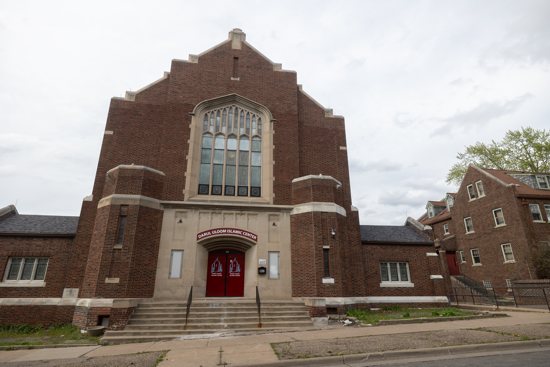
A parish festival is a great celebration and a great fundraiser, and St. John in St. Paul had plenty of reasons for both. Dedicated on Frances Street (known today as East Fifth Street) in St. Paul in 1886, the Irish Catholic parish quickly became known for its parish festivals, which happened multiple times each year.
The Harvest Home festival was a fall event first held in 1887. Father Louis Cornelius asked his parishioners to bring to the celebration both alms and contributions of fresh fruits and jellies to share with local charities. In other years, St. John hosted an April Festival of the Seasons. The parish was most well-known, however, for two other events.
St. John’s August festival was “a leading festival of the season” between at least 1888 and 1922. It could be up to a weeklong party that drew crowds of parishioners and neighbors on multiple evenings. Music, refreshments, games, entertainment and ice cream were all on offer, but the parish’s active Catholic Total Abstinence Union made sure that alcohol was not the main event. People of all ages won prizes, some of which were quite valuable: a gold-headed cane, a gold watch and an ironing machine. Others were more sentimental, like a picture of the pastor. The result was money that could be used to help neighbors in need or to build church buildings. By 1890, they had raised $13,000 to build the parish school. They raised more to repair it a decade later after it was struck by lightning.
The funds raised did not always go to such pious causes. In 1897, St. John and the nearby Irish Catholic parish of St. Patrick competed against each other in a summer festival fundraising challenge. Whichever parish raised less money would have to cover the expenses of a trip to the old country for the other parish’s priest. It was an exciting and close contest, with St. John winning by only $7.70 with a total collection of $2,105.82. In the end, St. Patrick actually paid for both priests to take the two-month trip together.
St. Patrick’s Day was the other key event on the St. John calendar during its first few decades. Each year the parish’s young people organized an event. Some years they featured soloists and duets from the best local singers. Other years, parish plays were the main draw. In fact, these events drew so many people that there was not a space in the parish school big enough to hold them. Each year, the festive event moved from one neighborhood hall to another. One year, it was hosted at Sacred Heart, the German Catholic church two blocks away. By 1922, it was clear that St. John parish had outgrown its 400-person worship space. The Dayton’s Bluff neighborhood had grown, and they built a new brick church to replace the first frame one. A new brick school followed in 1931, and both certainly played host to decades of festivals and other celebrations before the parish closed in 2013. Among other reasons, by 2013 there were no longer enough Catholics in the neighborhood to support two parishes within two blocks. In 2014, the buildings were sold to the Darul-Uloom Islamic Center, which continues to serve as a place for many East African immigrants in the area to worship and study today.
Luiken is a Catholic and historian with a doctorate from the University of Minnesota. She loves exploring and sharing the hidden histories that touch our lives every day.




